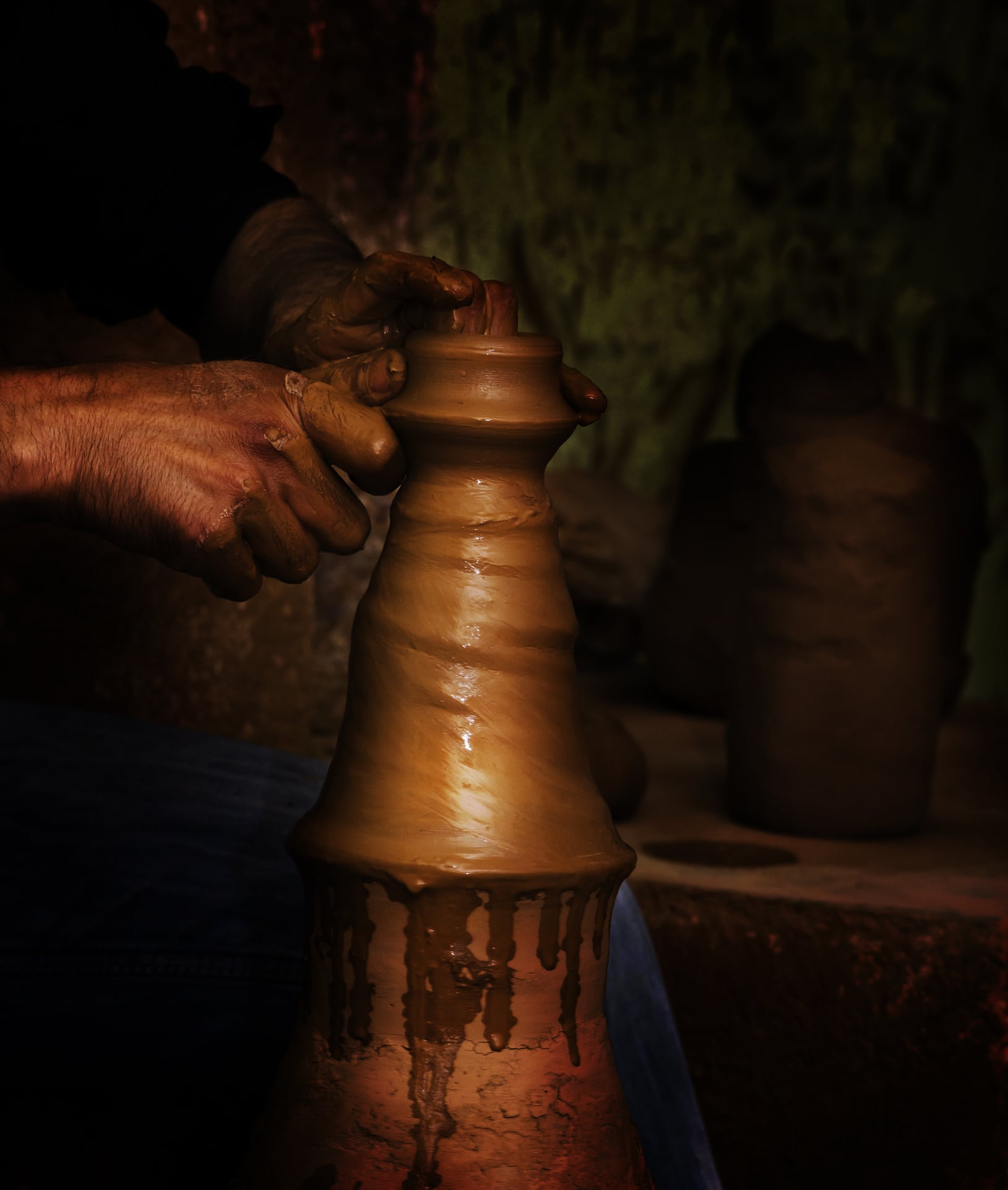How to Set Up a Home-Based Pottery Studio with Kiln Safety Considerations?

Setting up your own home-based pottery studio can be an exciting venture. It allows you to focus on creating beautiful ceramics in the comfort of your own space. However, the process requires careful planning and consideration, especially when it comes to safety. This not only involves the setup of your kiln, but also the handling of clay, glaze and other materials, as well as the maintenance of your tools and workspace.
Choosing the Right Space for Your Studio
The first step in setting up your home pottery studio is finding the right space to work in. It’s crucial to remember that pottery-making is a messy process, involving dust and other debris.
In parallel : What’s the Best Way to Combine a Home Office and a Yoga Retreat in a Sunroom?
You need to choose a space that is easy to clean and maintain. The best option would be a spacious room or garage with concrete or tiled floors, as these are easier to clean up after your pottery work. Avoid carpeted areas as they can easily trap dust and are difficult to clean.
Adequate ventilation is another important consideration for your studio. The processes involved in pottery-making, such as firing and glazing, can release harmful fumes that need proper ventilation to disperse. Therefore, your studio should have enough windows or extraction fans to keep the air clean.
This might interest you : How to Design a Cozy and Inspirational Writer’s Attic with Skylights?
Lastly, lighting is a crucial factor. Good natural lighting is ideal to check the consistency of your clay and the colors of your glazes.
Setting Up Your Kiln and Safety Considerations
When it comes to pottery, the kiln is a pivotal tool. However, handling and operating a kiln can be quite dangerous if you do not follow necessary safety measures.
Firstly, you should place your kiln in an area with good ventilation. Kilns release fumes during the firing process that can be harmful to inhale. If possible, the kiln should be placed near a window or an extraction fan.
Secondly, kilns can reach extremely high temperatures, posing a fire hazard. Ensure that your kiln is situated away from flammable materials and that there’s a fire extinguisher handy in your studio.
Finally, regular maintenance of your kiln is crucial for safety. Regularly check the wiring for any signs of wear and tear and replace any broken parts immediately.
Managing Clay and Glaze Materials Safely
Working with clay and glaze materials can be a rewarding experience, but it requires careful handling and storage.
Clay dust can be harmful when inhaled over a long period. You should always wet-mop your studio to prevent clay dust from becoming airborne. Always wear a dust mask when handling dry clay or cleaning up clay dust.
Glazes, on the other hand, often contain hazardous materials. Always wear gloves and a mask when mixing your glazes and never eat or drink in your studio to prevent accidental ingestion.
Keeping Your Tools and Workplace Clean
Keeping your tools and workplace clean is not only essential for creating beautiful ceramics but also for ensuring your safety.
Clean your tools regularly to prevent clay buildup. This not only keeps your tools working effectively but also reduces the amount of dust in the studio. Additionally, always check your tools for any signs of damage and replace them as necessary.
As for your workplace, a clean environment minimizes the risk of accidents. Regularly mop the floors and wipe down surfaces to keep them free of dust and debris.
Ensuring Adequate Safety Measures
Aside from the safety considerations mentioned above, there are additional measures you should take to ensure a safe working environment.
Firstly, ensure you have a well-stocked first aid kit in your studio. Accidents can happen, and having quick access to first aid supplies can make a huge difference.
Secondly, remember to take regular breaks. Pottery can be physically demanding, especially when you’re working for extended periods. Taking breaks will not only help prevent fatigue but also keep you alert, reducing the risk of accidents.
Finally, invest in a good quality pair of safety goggles and gloves. These will protect your eyes and hands from dust and other potential hazards.
Setting up a home-based pottery studio with a kiln can be a rewarding adventure, but safety should always be a top priority. By taking the above precautions, you can create a safe, efficient, and enjoyable workspace to craft your beautiful ceramics.
Organizing the Work Area for Efficiency and Safety
The work area you establish should be both efficient and safe. It’s essential to think about the flow of your work, from the initial clay preparation to the final firing in the kiln.
The pottery wheel should be positioned in such a way that you can easily access your clay, tools, and water without unnecessary movement. Keep in mind that the wheel will create a significant amount of clay spatter, so ensure it’s placed somewhere easy to clean.
Your work table should be sturdy and at a comfortable height. This is where you will handle the clay and create your pottery pieces. The height should be such that you can work without bending over and straining your back.
The glazing area should be separate from the clay working area. The glaze particles should not come into contact with your clay before firing. Consider creating a spray booth for glazing to contain the glaze particles and protect your lungs.
For the kiln room, choose a well-ventilated space, free from flammable materials. Electric kilns should be placed away from any water source or dampness to avoid electrical hazards. If you’re using a gas kiln, be wary of carbon monoxide build-up, and ensure a carbon monoxide detector is installed.
Remember, kiln firing is a process that requires constant monitoring. A kiln sitter or a digital controller can be a useful tool to help monitor the temperature and firing time.
Essential Tools for Your Home Pottery Studio
To successfully set up your home pottery studio, you need to equip it with the right tools. Essential tools for pottery include the pottery wheel, kilns, shaping tools, and various types of ceramic materials.
Soul ceramics provides a wide range of pottery tools and equipment that you can choose from. As a home-based potter, you might need a pottery wheel, a kiln, a variety of shaping tools, kiln shelves, posts, and cones, to name a few.
The pottery wheel is a fundamental tool for shaping your pottery. There are various types of pottery wheels to choose from, including electric, kick, and portable ones. The choice largely depends on your budget, available space, and personal preference.
Kilns come in various types and sizes. Electric kilns are popular for home studios due to their ease of use and control. Jen Ken kilns are a great choice for beginners and professionals alike.
As a pottery studio manager, you should also consider investing in carving tools, brushes, and sponges for shaping and detailing your pottery, and a variety of glazes to bring your ceramics to life.
Conclusion
Setting up a home-based pottery studio can be a fulfilling journey for anyone passionate about pottery. The process involves careful planning and implementation, with safety being paramount in all aspects. From selecting the right space, setting up the kiln, handling and storing clay and glaze materials safely, organizing the work area for efficiency, to equipping the studio with essential tools, every step is crucial to creating a safe and efficient working environment.
By following the tips in this article, you can establish a home pottery studio that is well-equipped and safe. Remember, safety isn’t an option but a necessity when dealing with pottery. Accidents can not only damage your work but also risk your health. So, always ensure you’re following all safety guidelines and have the appropriate safety equipment at hand. Put safety first, and you’ll be free to let your creativity flow and craft beautiful ceramics in your own space.
